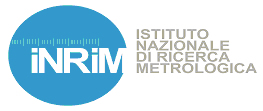Quantum Candela - project partners
- Istituto Nazionale di Ricerca Metrologica (INRIM, Italy)
 has significantly contributed to
the proposal of innovative predictable and absolute Silicon photodetectors and
holds a long experience in techniques for generation, manipulation and
detection of single photons. INRIM are also active in the development of
innovative cryogenic single photon devices. Dr Maria-Luisa Rastello is the
co-ordinator of the Qu-Candela project.
has significantly contributed to
the proposal of innovative predictable and absolute Silicon photodetectors and
holds a long experience in techniques for generation, manipulation and
detection of single photons. INRIM are also active in the development of
innovative cryogenic single photon devices. Dr Maria-Luisa Rastello is the
co-ordinator of the Qu-Candela project.- Český metrologický institut (CMI, Czech Republic)
 has experience in developing high-quality
electronic instruments. CMI are developing an advanced Primary Radiometry
department that includes among others a state-of-the-art laser based cryogenic
radiometer. CMI has recognised expertise in the silicon-trap primary standard
calibration at the 0.01% level.
has experience in developing high-quality
electronic instruments. CMI are developing an advanced Primary Radiometry
department that includes among others a state-of-the-art laser based cryogenic
radiometer. CMI has recognised expertise in the silicon-trap primary standard
calibration at the 0.01% level.- Justervesenet (JV, Norway)
 has an established track record in
photodiode research. They will perform simulations on charge-carrier losses in
the new type of photodiodes and establish a connection between measurable
parameters and the model predictions. JV has already acquired dedicated
simulation software for this purpose.
has an established track record in
photodiode research. They will perform simulations on charge-carrier losses in
the new type of photodiodes and establish a connection between measurable
parameters and the model predictions. JV has already acquired dedicated
simulation software for this purpose. - AS Metrosert (Metrosert, Estonia)
 has essential experience in research on
semiconductor theory and applications. In this project they will contribute
through analytical modelling of charge carrier losses in Silicon and producing
an assessment of the principle requirements in the modelling of a new type of
photodiode needed to achieve the accuracy at the uncertainty level of 1
ppm.
has essential experience in research on
semiconductor theory and applications. In this project they will contribute
through analytical modelling of charge carrier losses in Silicon and producing
an assessment of the principle requirements in the modelling of a new type of
photodiode needed to achieve the accuracy at the uncertainty level of 1
ppm.- Mittatekniikan keskus (MIKES, Finland)
 is in charge of the design of the
new type of photodiodes, communication with sub-contracted photodiode
manufacturer, photodiode surface profile measurements using AFM, and design and
construction of the detector to be operated at liquid Nitrogen temperature.
MIKES instruments and experience will be used for the photodiode surface
profile measurements.
is in charge of the design of the
new type of photodiodes, communication with sub-contracted photodiode
manufacturer, photodiode surface profile measurements using AFM, and design and
construction of the detector to be operated at liquid Nitrogen temperature.
MIKES instruments and experience will be used for the photodiode surface
profile measurements.- National Physical Laboratory, (NPL, UK)
 is internationally recognised as the
birthplace of cryogenic radiometry. This technology is now being extended for
operation at much lower optical powers which will be essential to photon number
based realisations. NPL has a proven track record in developing and
characterising solid state detectors. NPL is also active in the field of photon
pair generation and single photons emitters from electrically and optically
pumped sources. This work involves the generation and characterisation of the
photons' properties, and applications.
is internationally recognised as the
birthplace of cryogenic radiometry. This technology is now being extended for
operation at much lower optical powers which will be essential to photon number
based realisations. NPL has a proven track record in developing and
characterising solid state detectors. NPL is also active in the field of photon
pair generation and single photons emitters from electrically and optically
pumped sources. This work involves the generation and characterisation of the
photons' properties, and applications.- Physikalisch-Technische Bundesanstalt (PTB, Germany)
 has unique facilities and competencies in
the required fields of radiometry. PTB has a proven track record in the
characterisation of silicon photodiodes. PTB is active in the development and
characterisation of single photon sources and has proven expertise in molecular
beam epitaxial (MBE) growth of semiconductor heterostructures. PTB has a well
known expertise in low noise, high bandwidth electronics for operation and
characterization of TES-SQUID systems, thin film deposition and
photolithography facilities for cryosensor fabrication.
has unique facilities and competencies in
the required fields of radiometry. PTB has a proven track record in the
characterisation of silicon photodiodes. PTB is active in the development and
characterisation of single photon sources and has proven expertise in molecular
beam epitaxial (MBE) growth of semiconductor heterostructures. PTB has a well
known expertise in low noise, high bandwidth electronics for operation and
characterization of TES-SQUID systems, thin film deposition and
photolithography facilities for cryosensor fabrication.
Collaborator:
- Helsinki University of Technology (TKK, Finland)
 TKK helps MIKES in disseminating the
results related to the development of the predictable quantum efficient
detector
TKK helps MIKES in disseminating the
results related to the development of the predictable quantum efficient
detector

